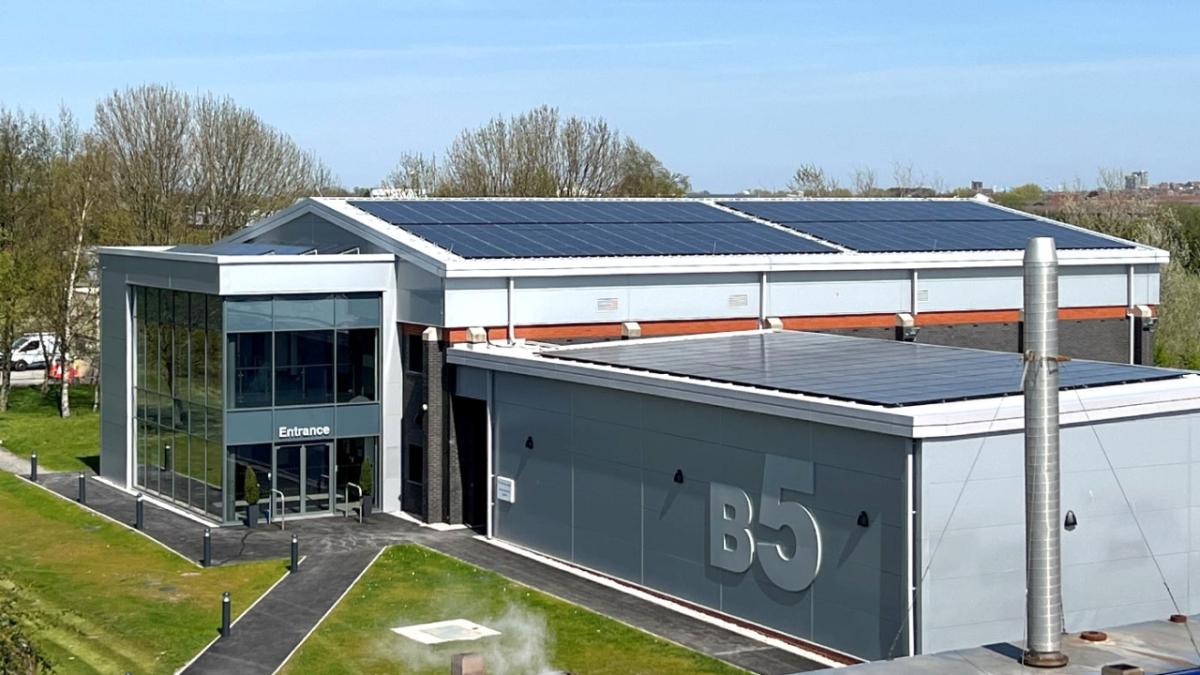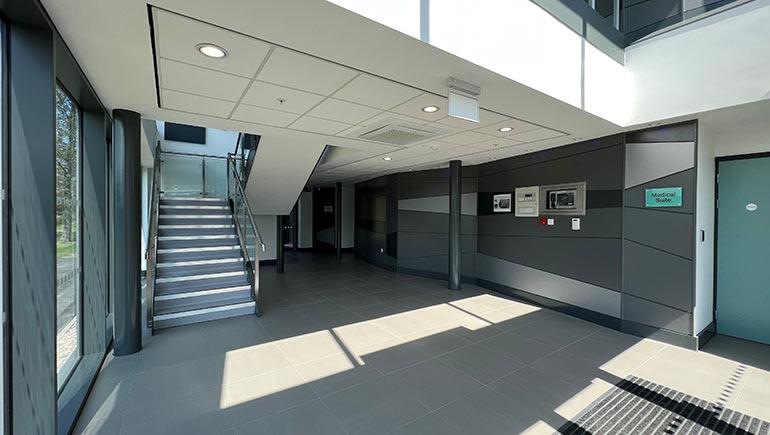R&D Facility Building in the UK Exemplifies Sustainability Innovation
This Earth Month, learn how a Bristol Myers Squibb facility in the UK has transformed its reputation
Originally published on Bristol Myers Squibb News & Perspectives
As a leading global healthcare provider, Bristol Myers Squibb recognizes that a healthy planet underpins the company’s vision to transform patients’ lives through science. Bristol Myers Squibb detailed its specific environmental sustainability goals in 2020; around the world, company teams have been working to reduce greenhouse gas emissions, increase energy efficiency and reduce waste and water use.
A synergy of these elements can be seen in the company’s Moreton, UK, facility. Building 5, situated on the 12-acre R&D site located between Chester and Liverpool recently was named one of the top four buildings in England and Wales for energy performance. Moreover, it is the only one of the top four that is occupied and air conditioned.
The mother of invention
Three years ago, the high energy costs in the UK put the Moreton facility in the top spot on another list, and not one the Moreton team pursued: It was the company’s No. 1 site by energy cost. Paul Cook, Chester and Moreton facilities manager, said he knew he needed a solution quickly.
What he didn’t know was that his team’s innovative solution to this crisis would launch a journey that would put Moreton in a leadership position for sustainability among all Bristol Myers Squibb facilities, as well as among all buildings in the UK.
“With our local projects team, we had some of the best minds in the business, and we went into brainstorming mode,” said Cook.
The building design is bright and aesthetically pleasing as well as energy efficient.
The goal was to significantly increase the building’s energy efficiency and reduce its net CO2e emissions to zero. In October 2020 the team began by retrofitting the building with a fabric insulating wrap that made it as thermally efficient as possible. Next, they implemented high efficiency low-to-zero carbon heating, cooling and lighting services controlled with smart technology to ensure they are used only when and where needed. After the building was optimized, the team considered a range of renewable energy options. They landed on solar energy, one of the most cost-effective and simple solutions, and installed solar photovoltaic panels on all available roof space.
The solar panels were projected to generate 110 MWh of electricity per year, almost two-thirds of the facility’s total needs. This renewable energy installation would eliminate 64 tons of CO2e emissions per year, the equivalent of not burning about 71,000 pounds of coal. So far, the panels have beat this prediction, generating 30% more electricity than expected as of March 2022.
Getting to neutral and beyond
By 2040, Bristol Myers Squibb aims to achieve carbon neutrality in its Scope 1 (emitted directly from the company’s facilities) and Scope 2 (emitted from companies that generate the electricity Bristol Myers Squibb purchases) emissions. Carbon neutrality means that the company is removing enough CO2e from the air to neutralize what it emits. Bristol Myers Squibb’s strategy to achieve that goal starts with making every building energy efficient and using as much clean energy as possible – the Moreton team, informed by the successful renovation of Building 5, is leading the way.
The team is planning a new, multi-million dollar building at the site, and outstanding energy performance is just one aspect of sustainability to be built into every facet. The new building is planned to be 60% bigger than the one it will replace, and yet use 68% less energy. Solar photovoltaic panels will supplement the power, along with a ground source heat pump and system to convert thermal energy to electricity. From insulation to heating, cooling and lighting, the building will have an abundance of smart technology to ensure top efficiency both actively and passively. Even the building glass will be cutting-edge, using suspended prismatic filters between the panes to reflect high-angled summer sunlight for cooling and to absorb low-angled sunlight for warming.
While the building is planned to have zero greenhouse gas emissions and reduce energy costs by as much as 82%, its surrounding site is planned to save water, resist flooding and provide an environment that promotes wellness. A balancing pond that drains to the local river will have reed beds that help clean the water and native plantings that provide a biodiverse scent and sensory palette. Special care will be taken to ensure that waste is fully treated before flowing into the balancing pond. Also, the surface of the parking area will be permeable to maximize the absorption of water into the ground.
“Building in sustainability and biodiversity may increase the budget in the short term, but it is paid back quickly – in this case in five years,” Cook said. “But, more importantly, we are planning for the long-term because we know that these investments will pay off financially as well as in so many other ways, for generations to come.”



